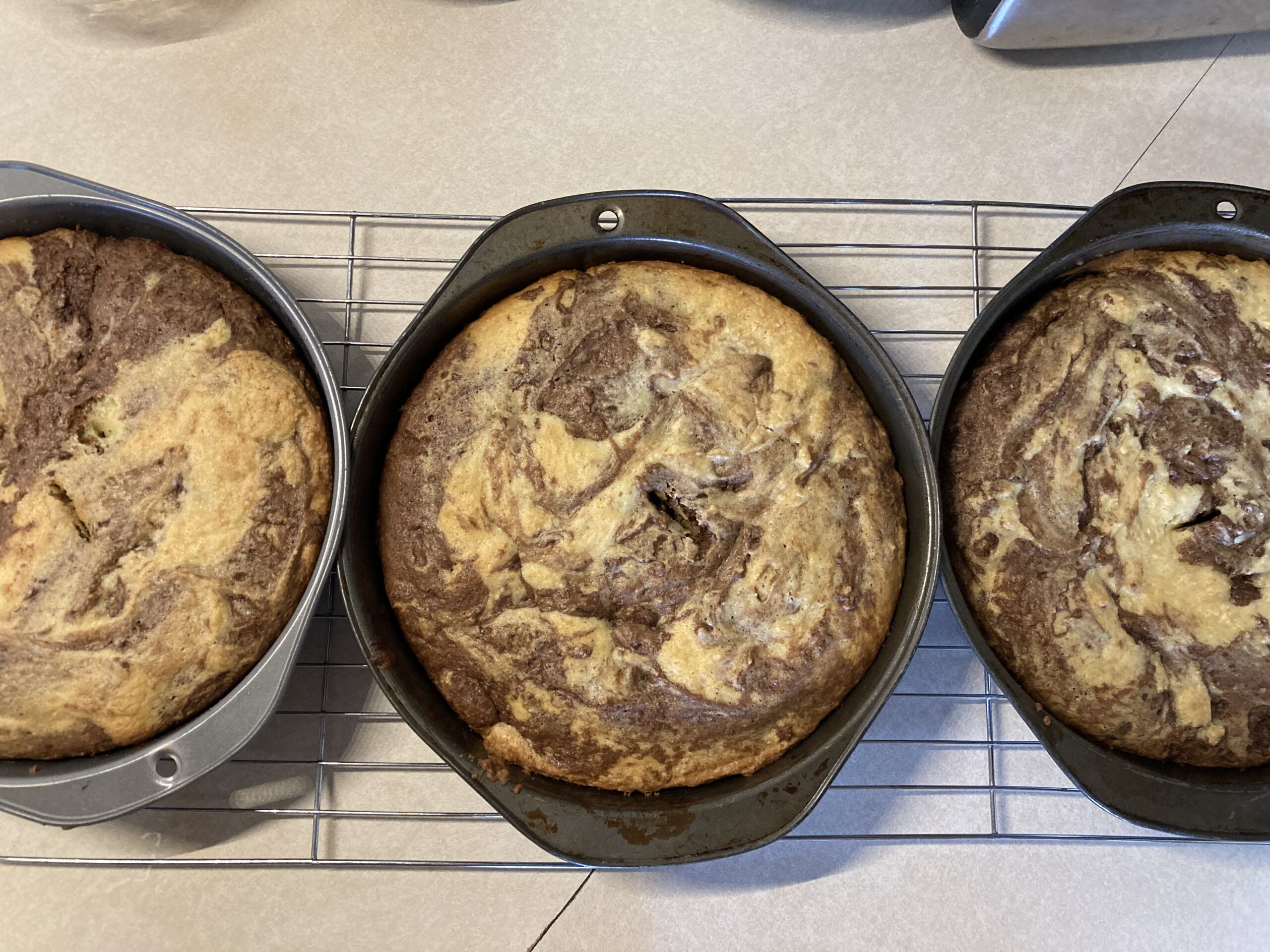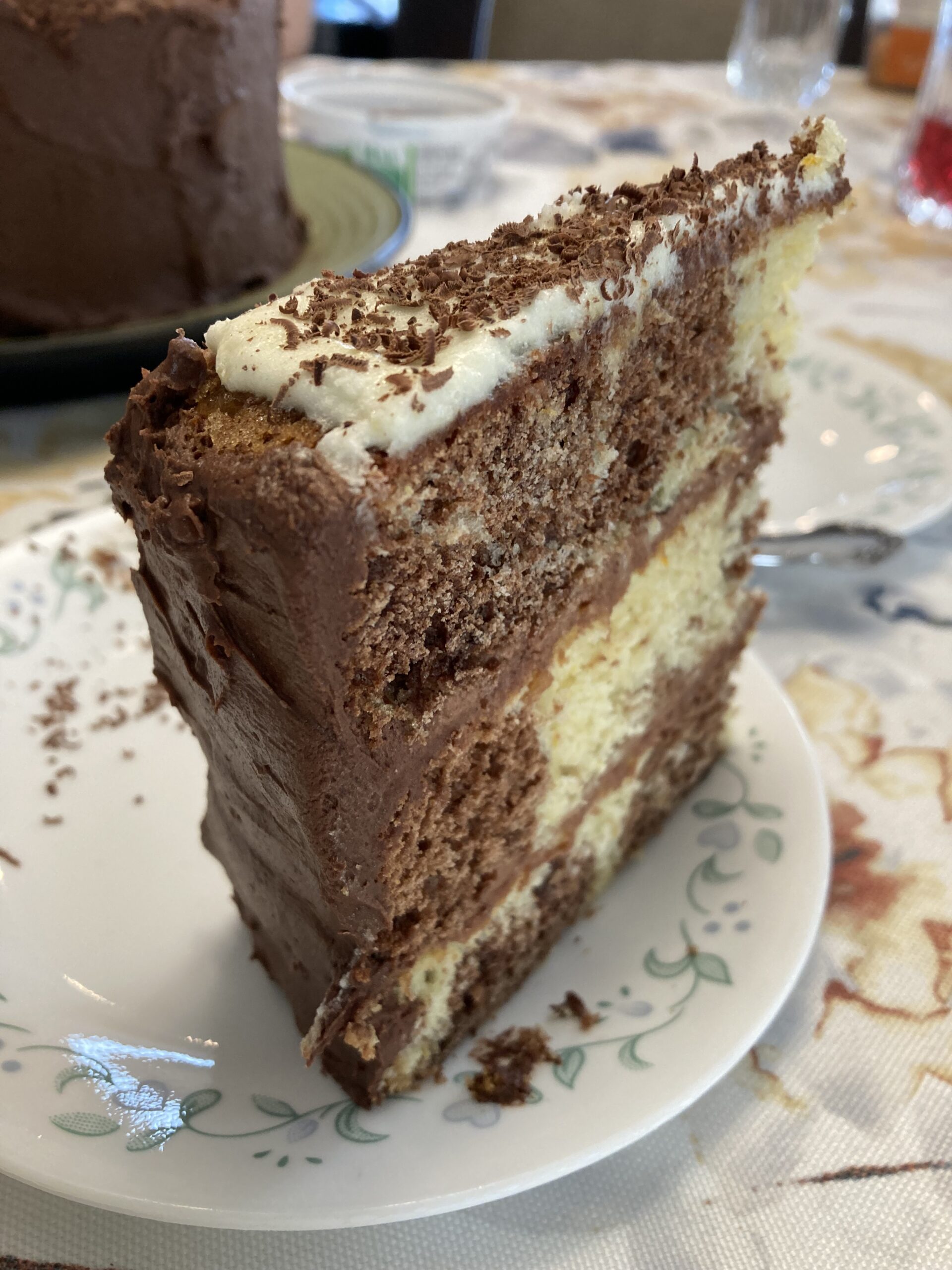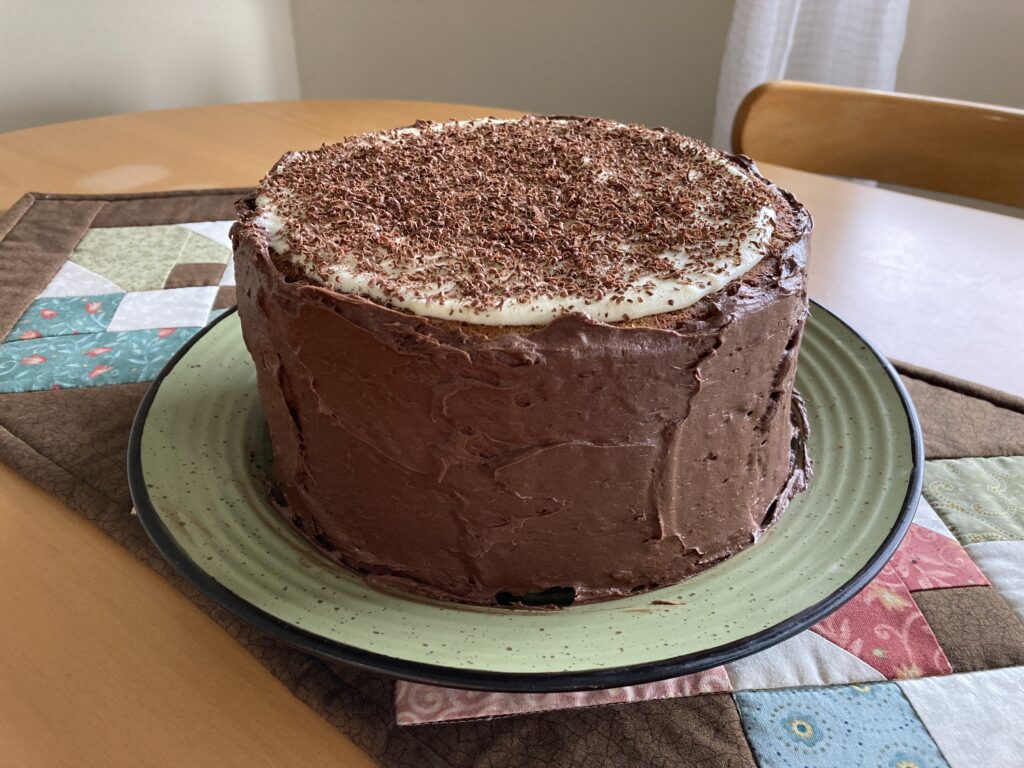We’ve reached the final recipe in our Taste of History blog series. To finish off the year’s cooking adventures, we give you Lady Goldenglow, or Second Mystery Cake.
Of all the recipes I (Teresa) tackled this year, this was without a doubt the one I was most excited about. So excited, in fact, that although the recipe was only scheduled to appear on the blog in December, I baked it back in September as a birthday cake for my mom.
No matter how much searching I did, I found very little information about the origin of this cake. A version of it appears on a retro baking blog, which states that it originated in the 1930s. Interestingly, the cake also appears on several Scandinavian blogs. A Swedish blog states that this retro treat is still popular in Norway – no wonder, then, that three of the top results when I searched for Lady Goldenglow were Norwegian blogs! Why, I wonder, is it so popular in Norway? And, having tasted the cake, why did something so delicious go out of fashion in Canada?

The cake was a little more labor intensive than the kind of baking I usually do, involving separating eggs, mixing two different flavors of batter, and making two different frostings for the finished cake. The batter turned out to be quite stiff and I was a little concerned that the cake might be tough or dry (this fear turned out to be unfounded). The easiest way to marble the cake was to spoon mounds of batter into my baking tins, alternating colors, and drawing a knife through them to create a marbled effect and to smooth out the top.

The orange frosting that went on top mystified me, as it contained an uncooked egg white and not just orange juice for flavor, but orange pulp. I removed all of the skin from the orange sections to ensure a smooth-as-possible texture. To my surprise, the orange frosting held its shape remarkably well, despite being rather soft. According to the instructions, I added melted chocolate to the orange frosting after spreading a generous amount on top of the cake to create the filling that went between the layers. I ended up adding cocoa, powdered sugar, and sour cream to the frosting after filling the cake since there was not enough left to cover the outside. This was a departure from the recipe, but I didn’t want to present my mom with a half-frosted birthday cake, even in the interest of historical accuracy.

The end result was a thoroughly delicious and celebration-worthy cake. It is definitely not a quick cake to throw together for a weeknight treat, but certainly something I’d make again for a special occasion. If anyone knows about the history of the cake, or has memories of making it, we’d love to hear your stories!

